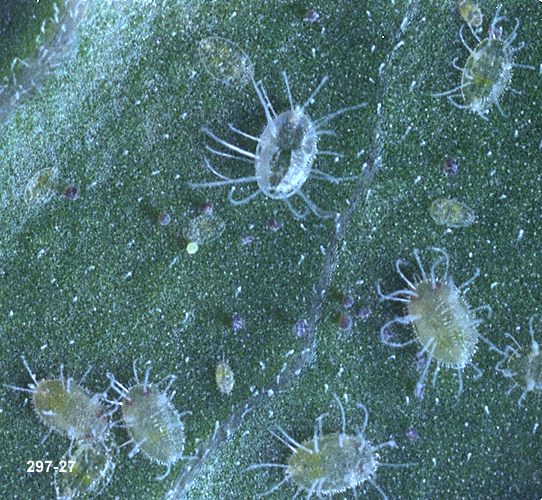Ok some new pics and new discoveries. You can see tons of sideways branching. The furthest/biggest leaves are only getting about 200-300 PAR since the spread on my tiny 60-80w fixture is small (it's using 40 and 60 deg optics).
Now before when I posted pics of what I thought looked 'bad' about new growth, it was subtle. It has since become more pronouced on all the relatively young on the right plant only.
Notice the brownness at the base, and limp curlyness:
Thankfully almost all the top growth is surviving now, but you can make out a distinct "brown" tint at all the bases of the small leaves, and a bit of the same saggyness from the previous picture:
I have two main theories on what the issue is.
The first would be whatever the heck THESE are!
At first I thought maybe whitefly eggsacks and nymphs... but I'm not sure. You can clearly see what looks like a burst eggsac with some babies crawling out.
I checked tons of other leaves, nothing else visible. I chose this leaf because its one of the oldest "original" leaves that was from when I got the plant. Funny but almost ALL the old leaves are now gone either from natural causes or my trimming them off

Now back to my 2nd theory on the brown tint, since I don't think my pest problem (ugly as it may be) is advanced enough to be causing the browning.
I've noticed that at every single node on both plants, particularly the right one, have at least 3-4 flowers coming out really close together. Some places have 5 or more coming out of almost a single point.
Obviously, a plant this bushy won't be able to bring that many peppers to fruit without simply overcrowding itself.
Could the over abundance of flower production actually be stealing so much nutrients that they have trouble making it to the top?? I know it's a long shot idea, but maybe I should start pruning back the flowers, since none are dropping yet.


















